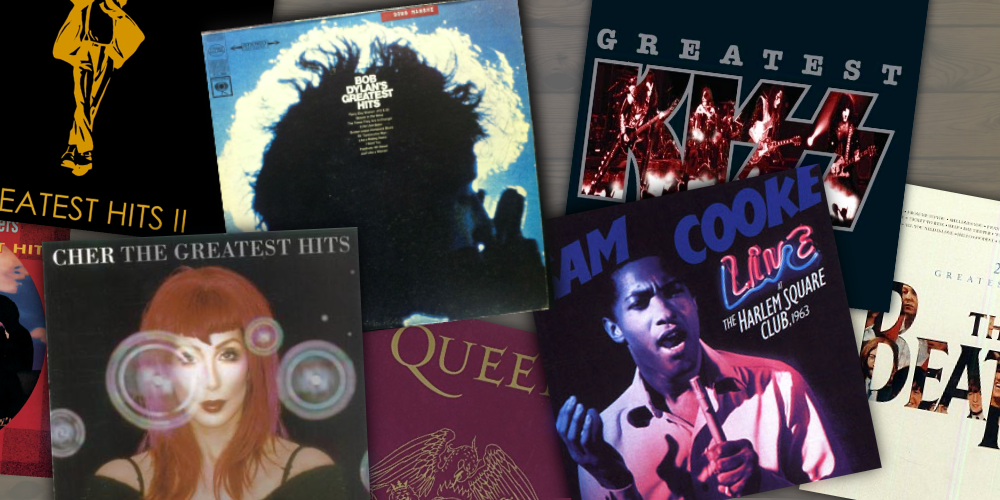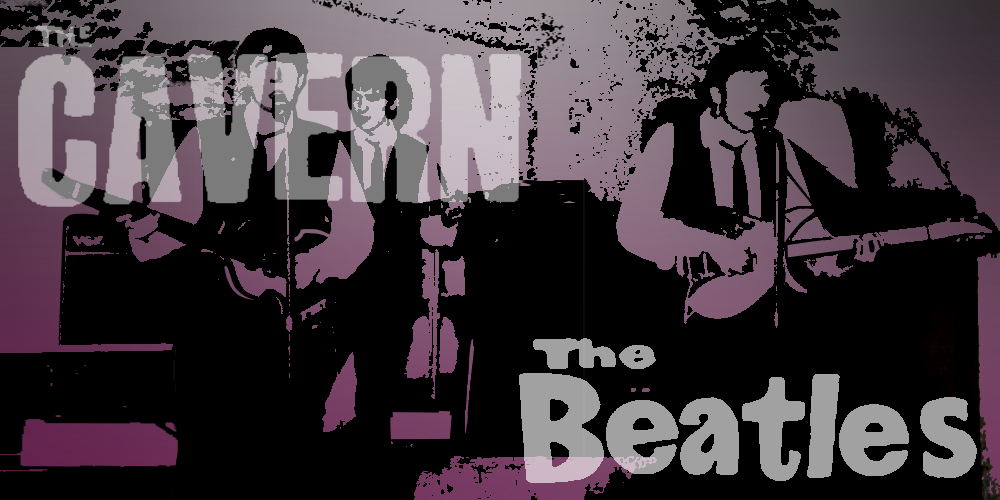Is there a form of album in all of popular music more useful, more misunderstood, and then most often discarded as the greatest hits record? If you love music, you’re certain to have had a relationship with them, though I’d wager they’ve been akin to an old flame for a long time now, warmly remembered, but come the close of day, you’re not taking to the same bed.
When you start in on listening to the Beatles, say, it’s probably not with the White Album or With the Beatles, unless you’re an especially hip newcomer, but I’d doubt your sincerity if I’m being honest. I would say it’s not even best to start there — one of those paradoxes of the listening experience. It’d be like all of a sudden standing in the center of a house when you’ve not come through the front door yet.
That’s a greatest hits record — they get you in the joint. You fall in love with them hard for however long a period. You play the hell out of them. You can be doing your homework for school, pining over your crush, playing with your pen, eating some chips, and yet as you do all of these things, you know every note that’s coming on that greatest hits album and tap your foot and sing some words as if you were in that band. Every single slight crease of sound is known intimately by you.
But woe is the greatest hits album — the very concept — because rarely do they feature in the histories of popular music. They are vessels of nostalgia. Think about it: have you ever witnessed the Beatles’ Red Album discussed as an album? Never, right? It is talked about fondly, lovingly, as a vital rite of passage, but you won’t find it referenced in the same sentence with Sgt. Pepper until this sentence.
I wrote my 33 1/3 book about Sam Cooke’s Live at the Harlem Square Club, 1963, and you need not be a sleuth born of Agatha Christie’s imagination to glean from the title that the LP is an in-concert document.
Greatest hits albums and live records are kissing cousins who could wander off from the crowd at the family reunion and discuss their shared purpose and lot in life. Each is meant as a holding pattern in an artist’s career. They are made quickly. The studio albums are the “work.” The toil, the efforting, the strain.
Most people think writing is hard, and playing is much easier. The Strokes can do a tour, no problem, but it will take them five years to write ten songs. I don’t know about you, but I find that disappointing on multiple levels.
With a live album, you set up the equipment, capture the gig — or a series of them — these outings were going to happen anyway (unless they were explicitly scheduled to cut a live album) — and then you put out a single show, or cherry-pick, and it’s hello new LP! With the greatest hits, you go back over what already exists and if it was a chart hit, it’ll likely be plucked for the record.
Greatest hits records and live albums usually have a lot of tracks in common. I love the idea of a band doing a live album of new material, but that doesn’t much happen, does it? Picture yourself having gone to the record store to buy KISS’s Alive in 1975, all geared up to do some home head-bangin’ with the hottest rock and roll band in the land, and there were all of these new songs you’d never heard before and a Nat King Cole cover sung by Peter Criss. That’d be a whole different brand of album. Radiohead could do it. Most bands couldn’t — though there are those studio cuts at the end of Alive II, for what they’re worth.
An album I really wish we got, which we didn’t, was the Beatles live at the Cavern in 1963. George Martin harbored the idea as a possible option for their first long-player before they essentially cut a live record in the studio with Please Please Me. Can you imagine, though? A sweaty Cavern session, so hot that you could practically feel the moisture running down your walls at home via rock and roll transference, and Johnny Moondog tearing through “Some Other Guy?” Would they have gone on to do what they did? Or would they have been forgotten save to music collectors and fans deep in the know, who cherished this weird, stomping blast of British beat and rhythm and blues? I can imagine original pressings going for four figures on eBay.
Sam Cooke has one of those greatest hits albums that works as a self-contained statement of dramatic artistic purpose, though it wasn’t as if he put it together. We’d be wise to recognize the greatest hits LPs that function as such, because they have their place alongside a Revolver, a Dark Side of the Moon, a Who’s Next, an Exile on Main Street, an OK Computer, a Blonde on Blonde, as documents that can merit study and are timeless.
The best of them — the first from Dylan, Jimi Hendrix’s Smash Hits, Elvis’s 50,000,000 Elvis Fans Can’t Be Wrong (one assumes not) — don’t just get you through the door: they can be an entire house itself. They’re happy accidents in a way because they weren’t designed to be art with a vision; they were created as a stop-gap productive-shifter. Nonetheless, there can be more than meets the ear.
For certain acts, greatest hits albums have especially practical organizational uses. For instance, I will listen to every album by Gerry and the Pacemakers, knowing that they took a couple of hits, then banged out ten or 12 covers in the studio until they had about 28 minutes’ worth of material. They weren’t making LPs so much as trying to find another way to sell the same hit singles.
What can I say? I like British beat music and rhythm and blues, so yes, I want to hear that Pacemakers cover of Arthur Alexander’s “Where Have You Been All My Life.” But a band like this is perfect for the greatest hits treatment. You get the one record, and it’s all you need.

Consider, though, the Who’s Meaty Beaty Big and Bouncy. We think of the Who as an albums band. Not a singles outfit. But on that 1971 compilation, we see a singles act that can hang with anyone. Beach Boys, Beatles, Aretha. And you know what? If you want to argue that Meaty Beaty Big and Bouncy is the best rock and roll record ever, I may not agree with you, but I also know I should hear you out.
Greatest hits albums, as efficacious undertakings, favor early rock and roll artists, when the LP-as-artistic-statement wasn’t even a thing. No one was thinking in those terms until Dylan and the Beatles in the early 1960s. Well, almost no one, because Sam Cooke was. Do you know what Cooke was thinking in terms of? Everything. Albums, concept albums, singles, pop songs, soul songs, songs of stunning social acuity. He was an eclectic visionary, and that’s in part why I wrote about him.
But to write about Sam Cooke’s Live at the Harlem Square Club, 1963, cut in January of that year, was to write about many of those songs in their studio guises as well. No less than seven songs from the 1962 comp The Best of Sam Cooke — which was actually Cooke’s second greatest hits package — were given an airing that night in Miami that produced the above live album which was then shelved until 1985 — more than twenty years after Cooke’s death. There are only nine official cuts on the LP. (If you’ve read my 33 1/3 book, you know how “You Send Me” is essentially hidden away as this sonic bomb that goes off like nothing in the Cooke catalog or the entire history of rock and soul music.)
Those studio hits changed much in the live context so as to become different works. They merited different approaches and had grown into different identities, but getting to where we are going — and it’s no different for the songs on Harlem Square Club — involves understanding where we’ve been. Think of yourself at 24, and you at 30. And so on. Not the same, right? Or that is part of the goal/plan if you’re doing it right, and if you’re not, well, try better, which also has a revealing amount to do with listening.
Sam Cooke’s second greatest hits album is the definitive statement of his prowess as a maker of singles. But those songs are “mere” pups — forgive the quotes; I’m not denigrating the radio-worn hits— compared to the battle-tested, warrior versions we hear on the live record. Boots on the ground. Soul boots. And boots of love, for the larger good. Both albums march forward, but they take different roads. And neither represents what is meant by “filler” any more than the clouds in the sky that keep it from being a boring, perpetual blue.
So don’t just revisit your favorite greatest hits albums for the sake of bygone listening days, nor as a means of saying “hey, thanks for hooking me.” Listen to them anew. There may be a lot more there than you’ve ever considered in the time since. Enter that house! There’s a chance it’s your dream home — or a dream second home — and you’ve had the keys all this time.•




